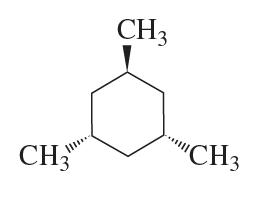Here are the essential concepts you must grasp in order to answer the question correctly.
Conformational Analysis
Conformational analysis involves studying the different spatial arrangements of a molecule that can be achieved by rotation around single bonds. In cyclic compounds, such as cyclohexane derivatives, various conformers can exist, each with different stability due to steric interactions and torsional strain. Understanding these conformers is crucial for predicting the most stable structure of a molecule.
Recommended video:
Understanding what a conformer is.
Steric Hindrance
Steric hindrance refers to the repulsion between bulky groups within a molecule that can affect its stability and reactivity. In conformers, bulky substituents prefer to be positioned in a way that minimizes interactions with other groups, often leading to staggered arrangements. Recognizing steric hindrance is essential for determining the most stable conformer of a molecule.
Recommended video:
Understanding steric effects.
Wedge and Dash Notation
Wedge and dash notation is a method used to represent three-dimensional structures of molecules on a two-dimensional plane. Solid wedges indicate bonds that project out of the plane towards the viewer, while hatched wedges represent bonds that extend back away from the viewer. This notation is vital for visualizing the spatial orientation of substituents in conformers, aiding in the identification of the most stable arrangement.
Recommended video:
Alternative MO Notation for Dienes

 Verified step by step guidance
Verified step by step guidance Verified video answer for a similar problem:
Verified video answer for a similar problem:



 4:02m
4:02m